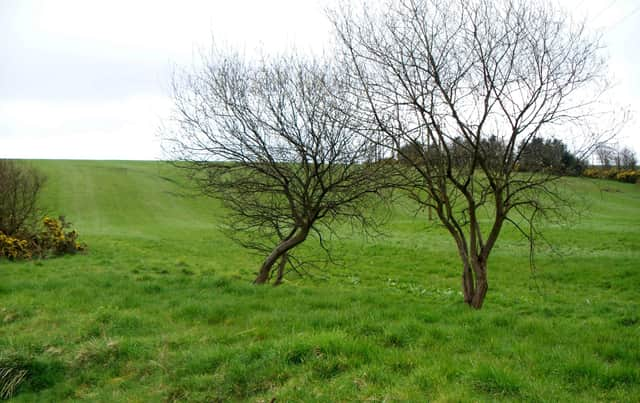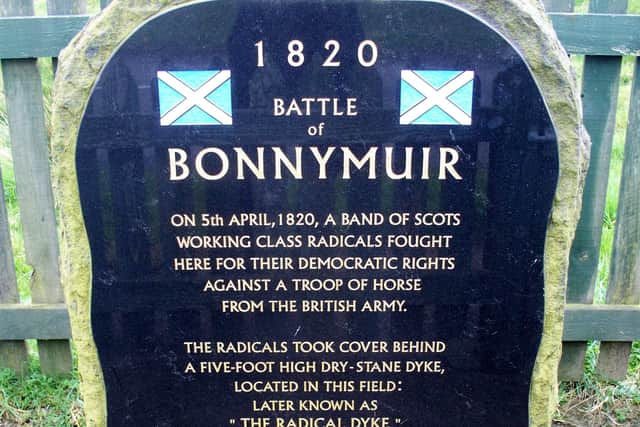Workers’ revolt ended in Bonnybridge battle


Provost Billy Buchanan’s planned memorial will now wait until later in the year but as we approach the day itself I want to remind you of what happened on April 5, 1820.
In the early 19th century the living and working conditions of the population were very poor and the complete lack of political power meant they had no way of redressing their grievances. But the example of the French Revolution encouraged some brave men to challenge the Government by taking up arms and, all over the country, groups were formed and plans laid.
Advertisement
Hide AdAdvertisement
Hide AdThe weavers and other radicals in the west of Scotland decided to seize Glasgow and planned to take cannons from Carron Iron Works to Cathkin Braes overlooking the city.


In the small hours of April 5, a group of about 20 men set off for Falkirk led by Andrew Hardie, a former soldier who had fought at Waterloo five years before. At Condorrat they were joined by a handful of local radicals under the command of John Baird and together they marched eastwards to Castlecary where they followed the Forth and Clyde Canal to Bonnybridge.
At this stage their plan was to meet up with the radical nailers of Camelon and advance to Carron where they thought the workers were sympathetic and ready to hand over the required guns.
When they reached Bonnybridge they split into two groups with Baird’s men following the canal towpath and Hardie taking what is still the main road to Falkirk.
Advertisement
Hide AdAdvertisement
Hide AdAt West Carmuirs Loan they turned south using the old drove road, passed under the canal through an ironstone pend and, along with the others, climbed up towards Bonnymuir.
Why they made this move is not certain but it may be that they had decided to abandon the march and make their way back to Glasgow.
More likely it was part of the web of deception which had brought them there in the first place.
We now know that Government agents were not only aware of the plan but that the men were being deliberately led into a trap.
Advertisement
Hide AdAdvertisement
Hide AdLater it was claimed that one of their number named as ‘‘John King’’ had suggested that they wait on the muir while he collected the Camelon men.
Instead he set off for Kilsyth to inform the 10th Hussars and the Stirlingshire Yeoman Cavalry who were waiting for the signal.
Using the so-called Radical Pend in Bonnybridge, about 30 mounted and well-armed soldiers rode under the canal and located the radicals waiting on the muir.
The clash was short and fierce with the ill-equipped weavers armed with a few old guns and home-made pikes holding their line behind a five foot stone dyke against the guns and sabres of the cavalry.
Advertisement
Hide AdAdvertisement
Hide AdThey fought hard and well but it was an unequal struggle. Eighteen men were arrested on the field and taken to Stirling for trial.
In September Baird and Hardie, found guilty of treason, were executed and the others were transported to Australia.
Although they were certainly deceived and misguided these brave men struck an early blow against the system and the reforms that followed owed much to their inspiration and their heroic sacrifice should never be forgotten.
Today a fine memorial stone stands on the B816 Bonnyhill Road close to the site of the battle as a reminder of the price our forefathers paid for rights that we often take for granted.